World Aids Day: ‘Never forget all those who were forsaken’
Hugh Kaye reflects on a lost generation.
By Steve Brown
Words: Hugh Kaye
A few years ago, I was contacted by someone on social media whom I hadn’t seen in more than 40 years. He and his twin were at junior school with me. I’m going to refer to them as Tom and Jack.
Tom had seen some of my work and figured out – you don’t have to be Einstein – that like him I am gay. We decided to meet up and talk about growing up “different” to most of the other boys at school.
We went out for a meal and after a few minutes of recalling the names of others at school, and agreeing that some of the staff were bonkers, I asked: “And how is Jack?”
Tom took a photograph out of wallet. “He was already ill… that’s the last picture of him before it started to show…”
Jack, it turned out, had also been gay and was one of the earliest victims of the HIV/Aids epidemic. He died in his early twenties.
It’s believed that 35 million people have died from Aids-related illness worldwide since the condition was first given that title in 1982. About 770,000 died last year alone, according to the World Health Organisation.
And that got me thinking that we all know names of famous people who were destroyed by the condition: Rock Hudson, Freddie Mercury, Liberace (however much his PR team tried to deny it at the time), Anthony Perkins, Denholm Elliott and John Curry to name just a few.
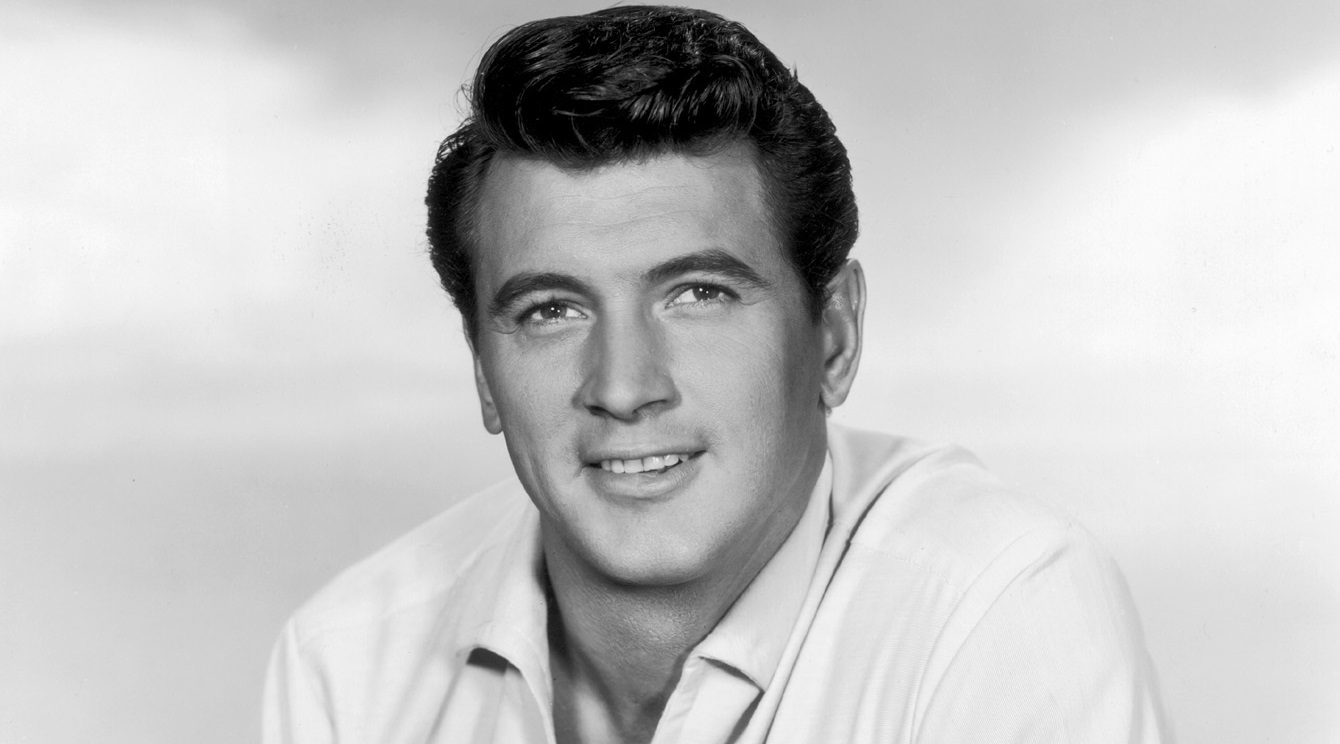
Hollywood star Rock Hudson died from Aids-related illness on October 2, 1985, aged 59
But for each of those there is a Jack. Not famous, not missed by fans around the world but still mourned by lovers, brothers, sisters, mothers and fathers. Their twin… And others who are more famous but few of us know how they died.
The first to die in the UK is believed to have been a 49-year-old man at the end of 1981. Terrence Higgins succumbed to a form of pneumonia, due to complications arising from Aids, the following summer. Between 1994 and 2009 there were another 19,208 deaths.
So, while there were famous faces, many gay men but some not, there are more lesser-known stories about people worth remembering just as much.
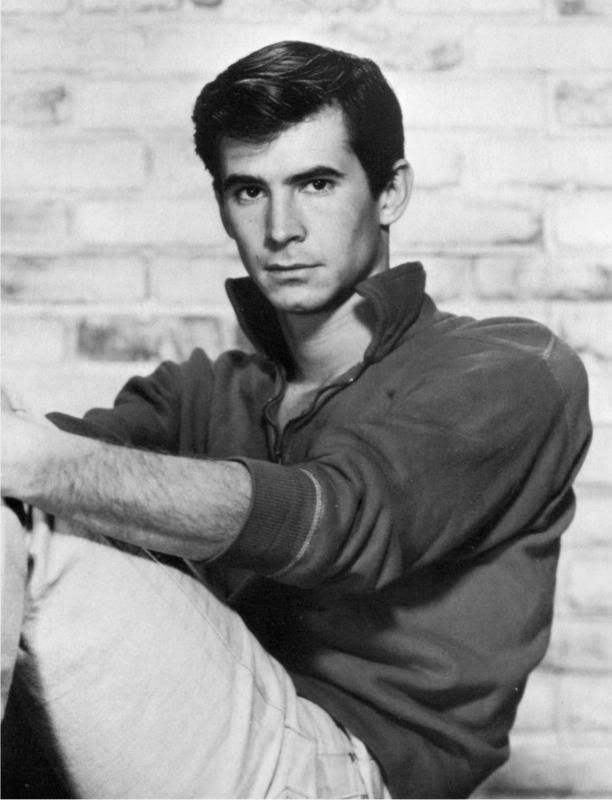
‘Psycho’ actor Anthony Perkins died from Aids-related pneumonia on September 12, 1992, aged 60
Michael Sundin was a Blue Peter presenter, appearing in 77 episodes between 1984 and 1985. He was also an actor, a dancer and a title-winning trampolinist.
He was also gay, and rumours abound to this day – vehemently denied by the BBC – that he was sacked after a tabloid newspaper printed pictures of him dancing in his underwear with a male stripper in London and because parents of young viewers were worried by his ‘effeminate nature’

Former Blue Peter presenter Michael Sundon died from Aids-related cancer on July 23, 1989, aged 29
Sundin became ill in 1988 and The Times reported his death in July the following year, with the cause of death given as liver cancer. But it was an Aids-related illness. He was just 29.
In an interview in 2007, former Blue Peter editor Biddy Baxter denied that Sundin had been sacked because of his sexuality, saying he left the show “because children didn’t like him – nothing to do with his sexual proclivities.”
Whatever the case, his was just one death among a soaring number. In 1981, the USA reported 80 cases, 26 of whom had died.
By March the following year there were 285 cases with 119 fatalities. Another year on, the figures were 2,640 and 1,092, with those rising to 8,408 and 6,405 by February 1985.
Some people say Florida-born actor Brad Davis was gay. His wife says not and it’s more likely that he was bisexual.

‘Midnight Express’ actor Brad Davis died from Aids-related illness on September 8, 1991
The star of the 1978 Oscar-winning Midnight Express, based on the moving true story of a young American jailed in Turkey for drug smuggling, looked set for superstardom but instead became addicted to drink and drugs and there were tales of his taking a gun to shoot the glass out of framed pictures of himself and smearing hotel walls with his own excrement.
After joining Alcoholics Anonymous, he got sober in 1981. But he was already HIV positive and was diagnosed in 1985. He died in September 1991 aged 41.
Despite the escalating crisis, American president Ronald Reagan had not made a public speech about the condition. Indeed, he only uttered the word for the first time in the same year in response to a question.
As his health failed, Davis – who also appeared in the original TV series of Roots and as a gay sailor in Fassbinder’s critically panned (but interesting) Querelle – was determined to speak out. He poured scorn on Reagan, who had won a landslide election in November 1980, saying: “What an unbelievably ignorant, arrogant, bigoted position.”

As the death toll reached the thousands, US president Ronald Reagan’s first public response to the Aids crisis was that he wouldn’t do anything to “condone homosexuality”
The Commander-in-Chief (read murderer-in-chief), when asked about the crisis, had replied that he wouldn’t do anything “to condone homosexuality”.
Writing in response, Davis added: “How could he possibly think that his opinion on homosexuality had anything to do with a devastating disease that was ravaging people, reducing them to skeletons and killing them?”
The fight against Aids will be hampered, Davis added, until “that kind of judgment is suspended” and it is widely recognised that no people with Aids “deserve to have this disease, and (that) all (of them) deserve only compassion and support.”
President Reagan’s press secretary Larry Speakes even joked about Aids in front of reporters – some of whom joined in – at a White House briefing in 1982.
Meanwhile, in Britain, the government gave us its unhelpful, scare-based iceberg adverts which did little to quell the idea that this was a “gay plague”.
Having also appeared on stage as Ned in Aids drama The Normal Heart, Davis never denied being gay when asked and he certainly worked as a hustler when he first moved to New York.
Fellow actor Timothy Patrick Murphy, who played Mickey Trotter in Dallas, spoke of having had an affair with Davis in the mid-1980s.

‘Dallas’ actor Timothy Patrick Murphy died from Aids-related illness on December 6, 1988, aged 29
In an interview that appears in Boze Hadleigh’s book Hollywood Gays, Davis acknowledged having had sex with men and, when asked if he considered himself bisexual, he replied “didn’t someone once say that everyone’s bisexual, deep down?”
Davis died in 1991 at the age of 41, with his wife much later claiming that she helped him to die. His friend Murphy died in 1988, a month after his 29th birthday – another casualty of HIV/Aids.
Fellow Dallas star, bisexual Dack Rambo, who played Jack Ewing between 1985 and 1987, died in 1994, aged 52.
Reagan finally delivered a major speech about Aids to the College of Physicians, in Philadelphia, in April 1987, branding it “public health enemy number one” and announced the approval for use of AZT, the first antiretroviral medicine.
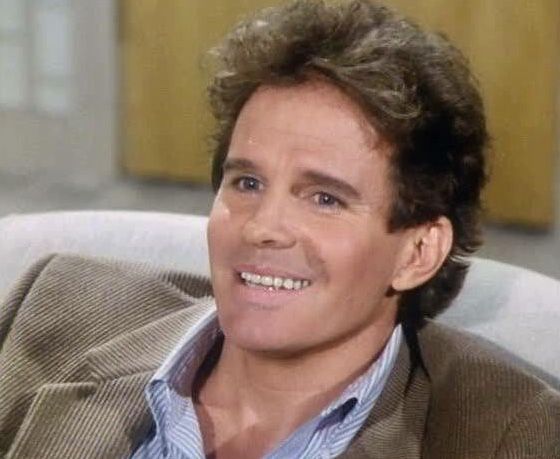
US actor Dack Rambo died from Aids-related illness on March 21, 1994, aged 52
But just minutes earlier he wittered on about abstinence, telling reporters: “[That] has been lacking in much of education.
“One of the things that’s been wrong with too much of our education is that no kind of values of right and wrong are being taught in the education process.”
He also mentioned “morality” during his address to the doctors. By this time, the US had slammed its doors on HIV-infected immigrants and tourists, and 20,000 Americans had died.
Reagan didn’t mention that AZT would cost a patient $10,000 a year.
And the dying went on.
Perry Ellis was 46 when he died in New York City. A fashion designer, who founded the sportswear house that bears his name, rumours about his health first started to circulate when he appeared on the runaway at the end of a fashion show in 1985, looking thin and gaunt, and he passed out at a party later that year.
A few months after that, his long-term partner, who was being treated for an Aids-related cancer, died.
Ellis himself was diagnosed with viral encephalitis soon after and although no mention of Aids was made in his obituary at the time, in 1993 it was confirmed that his death was also Aids related.
The Brady Bunch was one of those “wholesome” family shows that Americans tuned into in the late 1960s and early 1970s.
It might not have been so popular had audiences known that Robert Reed, who played the father Mike for 116 episodes, was – despite being married to Marilyn Rosenberger for five years – gay.

‘The Brady Bunch’ actor Robert Reed’s HIV status was listed as a contributing factor following his death from colon cancer in May 1992
Late in 1991, he was diagnosed with terminal colon cancer. His death in May 1992 was initially attributed solely to this, but details from his death certificate were made public and revealed that Reed was HIV-positive.
While he never contracted full-blown Aids, his doctor listed his HIV status as being among “significant conditions that contributed to death”.
A year after leaving office, Ronald Reagan apologised for the neglect of the epidemic during his eight years in office.
That was in 1990, the same year teenage haemophiliac Ryan White died. He had been diagnosed in December 1984 after a blood transfusion.
The youngster had to fight through the courts for the right to return to school when he felt well enough and faced discrimination – being called gay, told he must have done something wrong and his condition was “God’s punishment.”
Having been given just three months to live, Ryan became an HIV activist and started to change the public’s conception of the condition.
But he died of Aids-related pneumonia at the age of 18 shortly before he was due to graduate from high school. Among the pall-bearers at his funeral was Elton John while Michael Jackson and first lady Barbara Bush were among the 1,500 people who attended the service.
All that made Ryan relatively famous but he was by no means the youngest person to die.
Nkosi Johnson was born in a tiny village in South Africa in 1989. The nearest town had just one main street. Because his mother was HIV-positive, Nkosi was born with the virus.
Like Ryan White, he faced a school system which tried to bar him but the country prohibits discrimination on the grounds of medical status and the decision was overturned. He started school in 1997, the same year his mother died.
Despite his health problems, Nkosi remained fairly active and he was the keynote speaker at the 13th International Aids Conference, in Durban in 2000, where he encouraged people with HIV/Aids to be open about the illness and to seek equal treatment.
He finished his speech with the words: “Care for us and accept us — we are all human beings… don’t be afraid of us, we are all the same”.
He died in 2001 at the age of 12. At the time, he was the longest-surviving child to have been born HIV positive.
Nelson Mandela referred to him as an “icon of the struggle for life,” and in 2005 he was posthumously awarded the International Children’s Peace Prize. His foster mother was presented with the award by former Soviet leader Mikhail Gorbachev. Mandela lost his own son, Makgatho, to the illness in 2005. He was 54.
Eliana Martinez also had to battle to be able to go to school. She was just eight when she died in 1989.
Fashion model Gia Carangi died in 1986 at the age of 26. She was seen by many as the first supermodel.
Dubbed the godfather of “gansta rap”, Eazy-E – real name Eric Lynn Wright – died of pneumonia, brought on by HIV/Aids, in 1995. He was 30. The film Straight Outta Compton, in which his character features, is dedicated to his memory.
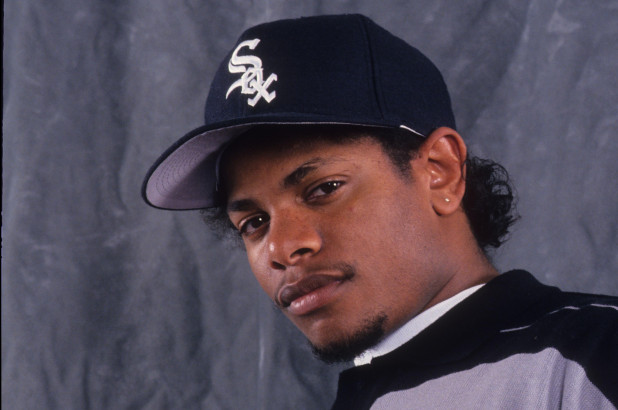
Eazy-E died from Aids-related pneumonia on March 26, 1995, aged 30
The Brazilian composer known as Cazuza died in 1990 at the age of 32. Sportsman Tom Waddell, who founded the Gay Olympics, died in 1987. He was 50.
Cuban-American TV star, Pedro Zamora who appeared on MTV’s Real World: San Francisco in 1994, was one of the first openly gay men with Aids to be seen in popular media.
Pedro had a boyfriend by the age of 14 and although he had heard of Aids, he knew nothing about the importance of safer sex and believed the condition primarily affected prostitutes.
He was diagnosed at the age of 17 while still at high school – having donated blood during a Red Cross campaign. He became an Aids educator, lecturing at schools and in churches.

Star of ‘MTV’s Real World: San Francisco’ Pedro Zamora died from Aids-related progressive multifocal leukoencephalopathy on November 11, 1994, aged 22
In August 1994, he was diagnosed with a rare viral inflammation of the brain, causing him to suffer with short-term memory loss. He died three months later, just hours after the final episode of the reality show aired. He was 22.
Oscar-winning British director Tony Richardson, a former husband of Vanessa Redgrave, died in 1991. He was 63.
Gay baseball star Glen Burke died in 1995, aged 43. Gay American poet and activist Essex Hemphill died the same year. He’d written about his symptoms in the poem Vital Signs and he often talked about being African-American and homosexual. He was 38.
Another African-American was choreographer Alvin Ailey. He was 58 when he died in 1989. The entrepreneur and co-owner of Studio 54 Steve Rubell died that same year, aged 46. Cause of death: hepatitis and septic shock, complicated by Aids.
Figure skater Brian Pockar died at the age of 33 from an Aids-related illness in 1992. Born in Canada, he’d won the bronze medal at the world championships 10 years earlier. He was outed as gay by fellow skater Scott Hamilton, who won gold at the 1984 Olympics and has since spoken in support of Donald Trump.
Another figure skater, the 1972 Olympic champion Ondrej Nepela, who represented what was then Czechoslovakia, died of cancer of the lymph nodes in 1989, aged 38.
His death is often attributed to Aids, and in 2000 Canadian skater Toller Cranston revealed that they’d had a brief relationship.
Filmmaker Marlon Riggs was another Aids casualty, dying in 1994. He was 37. The French author Cyril Collard was 36 when he died in 1993.
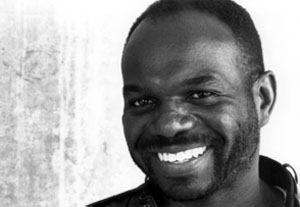
Filmmaker and gay rights activist Marlon Riggs died from Aids-related illness on April 5, 1994, aged 37
Paddy Chew is believed to have been Singapore’s first fatality. A former flight attendant, he moved into drag cabaret and wrote an autobiographical play called Completely With/Out Character.
Three months after its run ended in 1999, he died. He was 39. His family asked everyone attending the funeral to dress “glam.”
Perry Watkins was one of the first people to challenge the ban on gay men serving in the US military. An African-American, he was drafted in 1968 – at the height of the Vietnam War – despite admitting that he was gay.
After leaving the service in 1970, he re-enlisted for a six-year term four years later and despite investigations into his sexuality and the revoking of his security clearance, he remained in the army and rose to the rank of sergeant first class. He sometimes entertained other soldiers with his drag act. He died in 1996, aged 47.
Merritt Butrick played the son of James T Kirk in two Star Trek films. Thought to be bisexual, and with two panels on the famous Aids quilt, he was just 29 when he died of the rare parasitic disease toxoplasmosis, complicated by Aids.
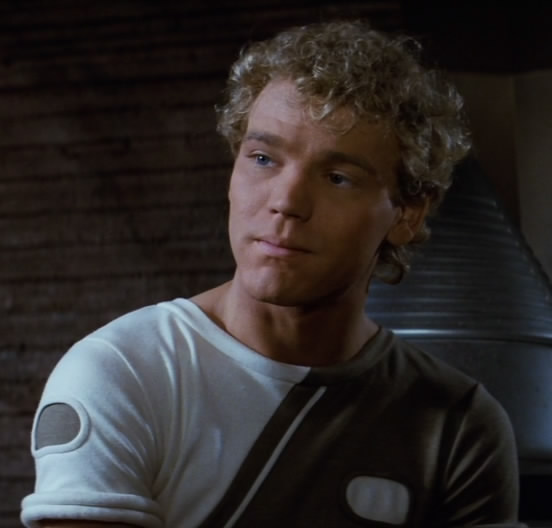
‘Star Trek’ actor Merritt Butrick died from Aids-related illness on March 17, 1989, aged 29
Fellow actor Howard Rollins, probably best known for his role in the TV version of In the Heat of the Night, died aged 46 in 1996, having suffered with an Aids-related lymphoma.
Older readers might remember the name Amanda Blake. She starred as Miss Kitty in 569 episodes of the hit TV Western series Gunsmoke, which ran from 1955 until 1975.
Although it’s not known how and when she contracted HIV, she died from cytomegalovirus, an Aids-related condition, in 1989, at the age of 60. Her husband Mark Spaeth had died four years earlier, also of an Aids-related condition. He was 45.
Singer-songwriter Dan Hartman, possibly best known for Relight My Fire, which has sold more than 50 million copies, died of an Aids-related brain timour in 1994. A closeted gay man. he was 43.
Gay British politician Nicholas Eden, the son of prime minister Anthony Eden, was 54 when he died in 1985.
Karen Dior appeared in transgender and bisexual adult films as well as having a small role in an episode of Xena: Warrior Princess. A transgender woman, she died in 2004 at the age of 37.
There were more “adult entertainer” victims of what had become a pandemic: John Holmes, famous for being extremely well-endowed, was 43, Lon Flexxe was 30, Casey Donovan was 44, Eric Stryker was 34, Tim Kramer was the same age. Jeremy Scott was 33.

Adult film star John Holmes died from Aids-related illness on March 13, 1988, aged 43
By 1995, Aids was the single greatest cause of death for men aged between 25 and 44 in America, and millions more around the world were infected.
It was also the year the US government approved the first protease inhibitors, a class of antiretroviral drug that, when combined with existing therapies, went some way to halting the pandemic.
But if you thought things only got better after that, think again.
In the past, a pastor in Florida asked a family with an HIV-positive member to stay away from his church.
In 2011, the BBC reported that three people had died after they stopped taking their life-saving drugs on the advice of evangelical Christian pastors.
In 2019, The Guardian ran a story about an American pastor offering Ugandans a “miracle cure”.
Known as MMR (miracle mineral solution), it contained industrial-strength bleach.
As an inducement to local church leaders, he offered smartphones to those particularly dedicated to spreading his cure.
So the dying goes on.
It’s now believed that the pandemic started in the Democratic Republic of Congo. In 1969, a month before the Stonewall riots, it’s believed that a young man in St Louis died after contracted HIV. A Norwegian sailor died of an Aids-related illness in 1976.
According to the United Nations programme, UNAIDS, 78 million may have been infected in the past 35 years.
Figures for 2018 show that 38 million people around the globe are living with HIV, almost two million of those are children under the age of 15. About eight million don’t even know they have it.
Men who have sex with men have always been disproportionately affected.
The first official US government report came in June 1981. It mentioned five young gay men with pneumocystis carinii pneumonia, in three different hospitals in Los Angeles. Three died.
Bigots like Anita Bryant and Reverend Jerry Falwell – and his “Moral Majority” — used the crisis to attack the LGBTQ civil rights struggle.
Other evangelical Christian leaders delivered a petition to Jimmy Carter, who became US president in January 1977, demanding a halt to the advance of gay rights.
“God’s judgment is going to fall on America as on other societies that allowed homosexuality to become a protected way of life,” said the charming Bob Jones III.
Jones also said: “It would not be a bad idea to bring the swift justice today that was brought in Israel’s day against murder and rape and homosexuality. I guarantee it would solve the problem post-haste if homosexuals were stoned… as the Bible commands.”
At the same time, he said he would end up being misquoted. But, after being much-quoted correctly, he finally apologised in 2015.
By August 2016, another government report found that between the start of the epidemic and October 2018 almost 700,000 people have died in the US alone.
In 2015, the British medical journal The Lancet reported the global incidence of HIV infection peaked in 1997 at 3.3 million per year. Thankfully, new infections are falling, down 40 per cent from that.
Aids-related deaths are down too, 30 per cent fewer people dying since 2010 and of course there are much better medicines these days.
PrEP is the life-saving drug gay men were desperate for in the Seventies and Eighties. HIV testing is now simple and quick.
We’ve reached the stage where if anyone infected with HIV who is virally suppressed cannot transmit the virus to a sexual partner. Undetectable is Untransmittable. U=U.
But we cannot afford to rest on our laurels and we must never forget all those who were forsaken, all those left to suffer in agony, all those who died, be they Alexis Arquette, Rudolf Nureyev and Arthur Ashe, or someone’s twin and former school friend called Jack.
And, if you are like me, you won’t easily forgive those who did too little in those dreadful early years.
With thanks to ranker.com. Lead image courtesy of We Were Here via Independent Lens
